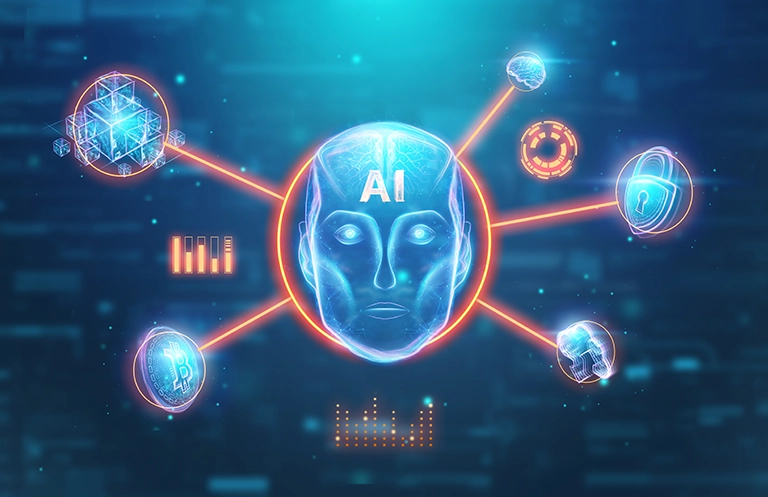Imagine a worker who is interacting with data on a computer. A hacker in the background is secretly accessing her company’s sensitive data. He obtains personal information and sells it to criminals, who use it to hold the firm hostage.
Although it appears to be something out of a movie, it occurs regularly in today’s online environment. Because of the importance of cyber security in current business operations, there is a rising need for cyber security expertise.
You will discover the importance, types of threats, benefits, and challenges in this introduction to cyber security.
Cybersecurity What Is It?
The protection against cyberattacks on internet-connected systems, including their data, software, and hardware, is known as cybersecurity. This method is used by both individuals and companies to stop illegal access to computer systems and data centers.
An efficient cybersecurity plan can offer a respectable degree of defense against hostile assaults that seek to gain access to, alter, obliterate, or extort sensitive data and systems that belong to a company or user. Security precautions are crucial in preventing attempts to disable or damage a system’s or device’s operation.
Importance of Cybersecurity
In the socioeconomic climate of today, cybersecurity is essential. Since they have access to all of the world’s knowledge, cybercriminals may easily obtain the user’s private and sensitive information. Enterprises must prioritize cybersecurity since network activities are commonplace and data leaks of any kind frequently result in serious damage. The following are some crucial elements of cybersecurity:
- One of the key elements of cybersecurity is risk management. Cyber risks seldom harm a company with an advanced risk management system. In addition to helping the organization reduce risks, a strong risk management program also aids in enhancing the organization’s overall digital security.
- Threat intelligence must be used by an organization. When interpreting threat intelligence, the adage “Precaution is better than cure” is a useful metaphor. The relevance of a threat intelligence program in an organization’s infrastructure configuration is frequently emphasized by IT organizations throughout the world since it is the first step toward cybersecurity.
- One of the most frequent cyberattacks that companies and people face is identity theft. The concept is straightforward: use someone else’s identity to get access to data within a company and/or to steal money. Nevertheless, one of the most common cyber threats worldwide is identity theft. Although governments at all levels are making every effort to cut down on identity theft, personal safety must begin at home.
- Businesses today place a high priority on cloud computing and the requirement for an “Always-On” mechanism. Cloud adoption is therefore the current trend. Every corporation, whether large or small, chooses cloud services. It is simpler for hackers and cybercriminals to target cloud systems and networks since cloud computing necessitates complex skills. A solid cloud security strategy is crucial since it not only aids in protecting the cloud but also offers another layer of protection to the organization’s IT infrastructure.
- Endpoint security is crucial for both consumers and companies. Most employees have their email and internal communication tools established on their mobile phones and/or tablets for rapid access and taking care of urgent concerns in addition to laptops and desktops utilized for work. End-to-end device security, or complete device security, aids in preventing unauthorized individuals, whether inside or outside the firm, from accessing sensitive and secret information.
Types of Cybersecurity Threats
Keeping up with new security developments, technological advancements, and threat intelligence might be challenging. It’s essential to defend data and other assets against numerous cyber threats. Cybersecurity risks include, for example:
- Malware: A harmful software program known as malware allows for the use of any file or application against a computer user. Many types of malwares include worms, viruses, Trojan horses, and spyware.
- Ransomware: Ransomware is another type of virus that encrypts and locks the victim’s computer system files before requesting payment to decrypt and unlock them.
- Phishing: Phishing is a form of social engineering that involves sending phony emails or other communications that appear to be from reputable or well-known sources. These communications, which are frequently random assaults, are intended to get sensitive information like login credentials or credit card information.
- Insider Threats: Insider risks are defined as security breaches or losses caused by individuals, such as employees, subcontractors, or clients. Insider threats can be nefarious or negligent.
- Distributed Denial of Service (DDoS): Attacks known as distributed denial-of-service (DDoS) disrupt the operation of a targeted system, such as a server, website, or other network resource. Attackers can slam a target system with messages, connection requests, or packets to slow it down or render it unusable while preventing genuine traffic from reaching it.
- Advanced Persistent Threats (APTs): Advanced persistent threats (APTs) are long-lasting, targeted attacks that include an attacker penetrating a network and staying undetected for a considerable amount of time in order to gather data.
- Man-in-the-middle (MitM): Attackers that assume two parties are in touch with one another use “man-in-the-middle” (MitM) attacks to intercept and transfer messages between them.
Benefits of Cybersecurity
The benefits of establishing and maintaining cybersecurity processes include:
- Protection for businesses against cyberattacks and data breaches.
- Network and data protection.
- Preventing access by unauthorized users.
- A breach’s quicker recovery.
- Security for end users and endpoint devices.
- Regulation observance.
- Continuity of operations.
- heightened confidence in the company’s reputation among employees, partners, consumers, and stakeholders.
Challenges of Cybersecurity
It’s challenging to implement reliable cybersecurity protections because of how quickly technology is developing. Software is updated and upgraded often, which causes new problems and vulnerabilities and exposes it to a variety of cyberattacks. Numerous businesses have already migrated their on-premises systems to the cloud, which creates additional implementation and design difficulties as well as dangers. Additionally, the IT infrastructure is always evolving. Due to a lack of knowledge about the many risks that exist in their IT infrastructure, businesses delay implementing cybersecurity solutions until it is far too late.
Conclusion
In conclusion, people and businesses must handle considerable obstacles presented by the current cybersecurity threat landscape in order to safeguard themselves against cyberattacks. Attackers are growing more skilled, and cyber risks are continuously changing. It’s essential to stay current with trends, attack techniques, and vulnerabilities.
eInfochips can be your partner for all of your cybersecurity services needs, from strategic analyses and transformations through turnkey installations and managed security operations. The cybersecurity services offered by eInfochips are varied and compliant with industry-wide security norms at the device, connection, and application levels. To learn more about our key offerings and to contact our team of experts click here.












